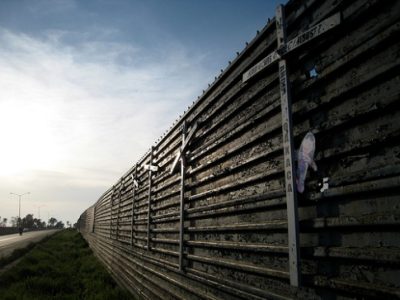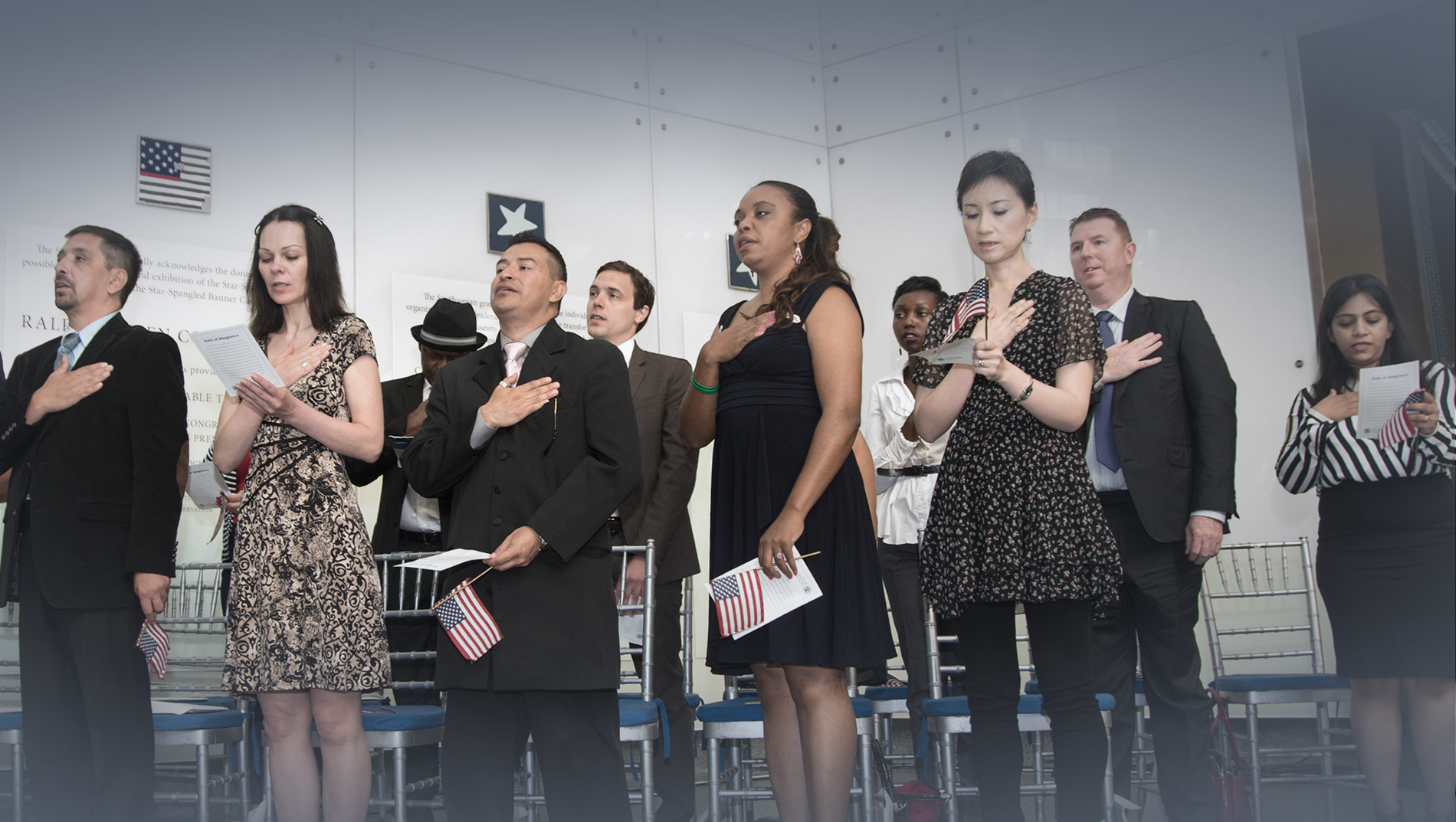Immigration 101
The U.S. immigration system is complex and can be difficult to understand. These resources provide key data points, historical information, and background on hot topics in immigration. Learn the basics about immigration. Immigration in the United States is complex and ever-evolving. Start here to understand the fundamental aspects of immigration policy, its history, and its impact on both individuals and the country at large. Learn commonly used terms about immigration law and how the U.S. immigration system is designed. Explore layered topics like how and whether immigrants can become citizens, as well as what individual protections look like under the law.
How the United States Immigration System Works
- How the Immigration System Works
- June 23, 2024
U.S. immigration law is very complex, and there is much confusion as to how it works. This fact sheet provides basic information…
Read More
Birthright Citizenship in the United States
- Birthright Citizenship
- October 16, 2024
This fact sheet explains birthright citizenship, the Fourteenth Amendment, and its interpretations. Who is…
Read More
Asylum in the United States
- Asylum
- August 27, 2014
Asylum seekers must navigate a difficult and complex process that can involve multiple government…
Read More
New Report Quantifies Benefits of Immigration Reform to U.S. Economy
Those policymakers and commentators who argue that we simply cannot afford to enact comprehensive immigration reform in the middle of an economic recession have their facts woefully wrong. According to a new report released jointly by the Immigration Policy Center (IPC) and the Center for American Progress (CAP), the economic benefits which would flow from comprehensive immigration reform would be dramatic. The report, Raising the Floor for American Workers: The Economic Benefits of Comprehensive Immigration Reform, uses a “computable general equilibrium model” to estimate that comprehensive reform which includes a pathway to legal status for currently unauthorized immigrants, as well as the creation of flexible limits on future immigration, would “yield at least $1.5 trillion in added U.S. Gross Domestic Product (GDP) over 10 years.” Moreover, comprehensive reform would “boost wages for native-born and newly legalized immigrant workers alike.” Read More

Connecting the Dots Between Immigration and Health Care Reform
As Congress continues to broker the specifics of health care legislation, some reports cite key Democrats as allegedly holding out their support of the bill contingent on a solid White House promise that a comprehensive immigration reform bill will be addressed this year—a reform bill that would provide health care coverage options to all immigrants, including undocumented immigrants on an earned path to citizenship. Read More

And They’re Off! Immigration Reform for a New Decade
Thousands of organizations, activists, and citizens are already out of the gate and will spend 2010 racing towards the finish line of fixing our broken immigration system. Some dedicated students have even embarked on a 1,500 mile walk from Miami to Washington D.C. in hopes of bringing attention to the human needs and costs behind our outdated system. Read More

Breaking Down the Problems: What’s Wrong with our Immigration System
While some characterize our immigration crisis as solely an issue of the 11 to 12 million unauthorized immigrants living in this country, our problems extend beyond the number of undocumented people to a broader range of issues. The lack of a comprehensive federal solution has created a slew of lopsided, enforcement-only initiatives that have cost the country billions of dollars while failing to end unauthorized immigration. The first step, however, in devising solutions to our problems is understanding the scope of them. IPC’s latest report addresses several key areas, including how our current immigration system functions, the structural failure of our system, issues stemming from an inadequate federal response and long-delayed immigration reform. Read More

Greyhound Lines, Inc. Accused of Racially Profiling Latino Passengers
Traveling home for the holidays might not be as cheerful as you may think if you plan on taking a Greyhound bus. According to a recent article in the Contra Costa Times, an immigrant rights group in San Bernardino, CA, is accusing Greyhound Lines, Inc. of racially profiling their Latino customers. The rights group, Immigration Raids Response Network, alleges that Greyhound Lines Inc. targets Latino riders by allowing Border Patrol agents—along with Greyhound employees—to “conduct immigration checks of passengers upon their arrival at the San Bernardino Greyhound bus station.” The rights group is now urging Latinos not to ride Greyhound buses nationwide. Read More

Shenandoah is a Cautionary Tale for How to Debate Immigration Reform
This week a police chief and two of his officers were charged with obstruction of justice in connection with their investigation of the beating death of Luis Ramirez, a 25-year-old undocumented Mexican immigrant, in Shenandoah, PA, last year. The two teenagers acquitted of his murder were also indicted on federal hate crime charges. While some measure of justice may eventually be served in the Ramirez case, this tragedy should serve as a cautionary tale as we move into 2010 and gear up for a new round of immigration reform debates. Policy makers and the media must understand that when the debate devolves from reasoned, fact-based discussions into fear and hate-mongering the consequences can be dire. Read More

Public Opinion Polls and the Future of Immigration Reform
For those of us who live and breathe immigration reform, it’s hard to remember that immigration isn’t everyone’s top priority. Not surprisingly, public opinion polls and headlines constantly remind us that health care and the economy consistently top the concerns of the general public. Even among Latino voters, a new study shows that health care is the most pressing issue. But this is neither a big surprise nor should it lead to the conclusion that immigration isn’t important. Polls are snapshots, taking the picture of the public psyche on a given day, at a given time, in the context of a range of political concerns. Read More

Transforming the Role of Immigration Enforcement through Immigration Reform
For years, the U.S. government has tried and failed to curb undocumented immigration through enforcement-only tactics at the border and interior raids. The number of Border Patrol Agents has increased substantially over the past years—as have budgets and technological investment at the border—yet none of these increases have resulted in a significant decline in the undocumented population. In fact, we have the largest undocumented population in our nation’s history. Simply enforcing the woefully outdated and ineffectual immigration laws currently on the books is not working. Many immigration enforcement experts—including DHS Secretary Janet Napolitano—agree that the only way to solve our immigration enforcement problems is through comprehensive immigration reform. Read More

Studies Show Latinos Climb Socio-Economic Ladder of Success
As a front-page story in today’s Washington Post reminds us: “Not since the last great wave of immigration to the United States around 1900 has the country’s economic future been so closely entwined with the generational progress of an immigrant group.” The story highlights the degree to which the children of immigrants from Latin America have become crucial to sustaining the working-age population and tax base of the nation—particularly as more and more of the 75 million Baby Boomers retire. Moreover, the parents of these children most likely would not have even come to this country if not for the U.S. economy’s past demand for workers to fill less-skilled jobs—demand which was not being adequately met by the rapidly aging and better-educated native-born labor force. The Post story also casts a spotlight on the insecurities and anxieties of commentators who feel that Latino immigrants and their descendants aren’t integrating into U.S. society and moving up the socio-economic ladder “fast enough.” Although these concerns are certainly understandable, they are as unjustified now as they were a century ago when they were directed at immigrants from southern and eastern Europe. Read More

FAIR Blames Immigrants and Children for Maryland’s Budget Deficit
The anti-immigrant Federation for American Immigration Reform (FAIR) claims in a new report that “Maryland’s illegal immigrant population costs the state’s taxpayers more than $1.4 billion per year for education, medical care and incarceration.” However, the statistical contortions in which FAIR engages to produce this number render it virtually meaningless. FAIR dramatically exaggerates the fiscal “costs” imposed by unauthorized immigrants by including schooling and medical care for their native-born, U.S.-citizen children in its estimate, and completely discounts the economic role that unauthorized workers play as consumers who help support Maryland businesses. Read More
Make a contribution
Make a direct impact on the lives of immigrants.

